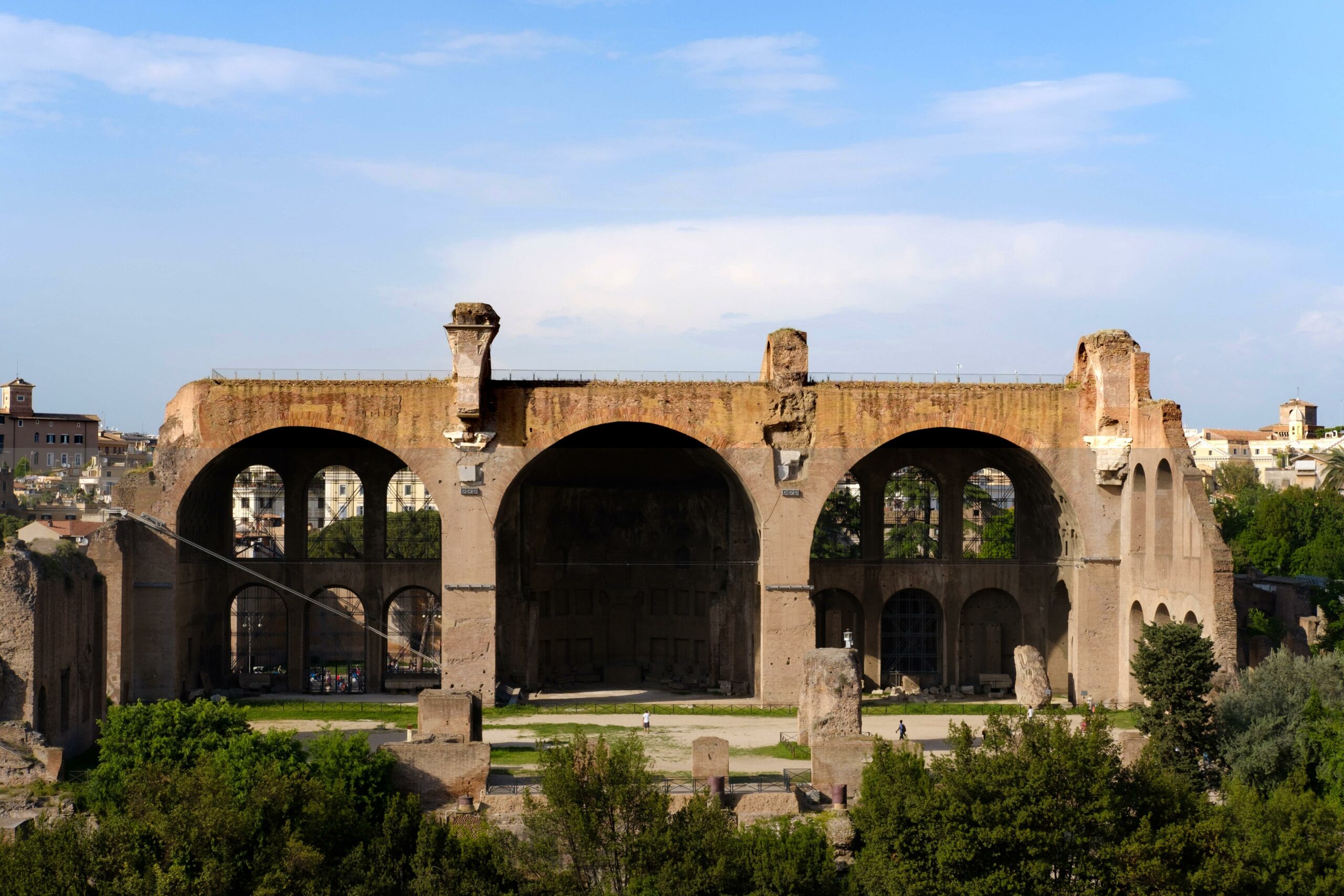Step back in time and embark on a journey through the annals of ancient history, where engineering marvels stood as a testament to the sheer brilliance of the Roman civilization. In this captivating article, we delve into the captivating world of the Roman transportation system, unravelling the secrets of their awe-inspiring engineering wonders. From the famous roads that connected empires to the majestic aqueducts that brought water to thirsty cities, brace yourself for a voyage of discovery through the unparalleled mastery of ancient Roman transportation. Strap yourself in as we explore an era where innovation and ingenuity reigned supreme.
Roman Transportation System
The Roman transportation system stands as a testament to the incredible engineering prowess and logistical mastery of ancient Rome. From roads to aqueducts and harbors, the Romans built an impressive infrastructure that played a crucial role in the success and expansion of their empire. Let’s delve into the marvels of the Roman transportation system and uncover the wonders of ancient engineering.
Roads: The Backbone of Rome
Roman roads, renowned for their durability and efficiency, formed the backbone of the transportation system in ancient Rome. These roads, known as “viae,” were meticulously planned and constructed to connect every corner of the empire. The Romans ingeniously used a combination of local labor and military engineering skills to build over 50,000 miles of roads, with the famous Appian Way being a prime example.
“Roman roads were the arteries that pumped life into the empire, facilitating trade, commerce, and military movements like never before.”
The Romans designed their roads to withstand the test of time. Multiple layers of materials, including gravel, sand, and stones, were carefully laid to ensure stability and longevity. The roads were then topped with a finely crafted layer of smooth stones, enabling effortless movement of wheeled vehicles and reducing wear and tear.
Table: Roman Road Construction Materials
| Layer | Materials |
|---|---|
| Surface | Smooth stones |
| Sub-Base | Sand or rubble |
| Base | Gravel or small stones mixed with sand |
| Foundation | Large stones or concrete-like material |
| Subsoil | Leveled and compacted natural ground soil |
Aqueducts: The Water Supply Network
The Romans were not only masters of land transportation but also excelled in hydraulic engineering. Their remarkable aqueduct system guaranteed a reliable supply of water to cities, towns, and military camps, enabling efficient urbanization and sustaining a growing population.
Aqueducts were colossal structures that ingeniously harnessed gravity to transport water over long distances. These engineering marvels utilized a network of specially designed channels, bridges, and tunnels to transport fresh water from springs and rivers to urban centers. The ancient Roman city of Rome alone boasted more than eleven aqueducts, which carried millions of gallons of water every day.
“The Roman aqueducts not only quenched the thirst of a vast empire but also symbolized the sophistication and engineering prowess of ancient Rome.”
The construction of these aqueducts required meticulous planning, impeccable craftsmanship, and an advanced understanding of hydraulics. The use of lead pipes, concrete, and arches revolutionized water transportation, allowing the water to flow smoothly and steadily across vast distances. The Romans even created underground tunnels to ensure the aqueducts maintained a gentle gradient.
Harbors: Gateways to Global Trade
As a mighty empire with extensive coastal territories, the Romans understood the importance of efficient seaborne trade. The construction of harbors played a pivotal role in facilitating maritime commerce and naval control. These man-made harbors were not only functional but also served as grand symbols of Roman power and prosperity.
One of the most impressive Roman harbors was Portus, situated near the city of Rome. Portus was a monumental complex comprising hexagonal basin harbors, quays, lighthouses, and warehouses. It was strategically located at the mouth of the Tiber River, allowing easy access and smooth handling of goods.
“Roman harbors were bustling centers of economic activity, connecting the empire to distant lands and boosting trade and wealth.”
The Romans utilized innovative construction techniques, such as the use of concrete and rubble-filled piers, to build sturdy and well-protected harbors. They employed dredging methods to maintain navigable waterways, ensuring ships could safely access the ports. The Roman use of lighthouses, breakwaters, and quays enhanced navigation and harbor efficiency, supporting the flourishing maritime trade of the empire.
In conclusion, the Roman transportation system was an awe-inspiring feat of engineering, showcasing the expertise, innovation, and organizational skills of the ancient Romans. The carefully constructed roads, the remarkable aqueducts, and the grand harbors all played integral roles in connecting the vast Roman Empire, fostering economic growth, and sustaining the empire’s dominance. The legacy of the Roman transportation system still resonates, reminding us of the incredible achievements of our ancient predecessors.
Roman transportation was a pivotal aspect of the ancient world. The extensive network of roads and the development of the revolutionary Roman aqueduct system were impressive feats of engineering that facilitated the movement of goods and people across the vast Roman Empire. From Roman chariots racing through the grand arenas to the magnificent ships sailing on the Mediterranean Sea, the Romans were innovative in their transportation methods. To delve deeper into the world of Roman transportation and explore the various modes of travel, click here: roman transportation.
Roman Road Construction: A Marvel of Ancient Engineering
[youtube v=”z1aFWtBXHII”]
First a wide area would be deforested in order to clear all vegetation. Then, the topsoil in the projected track area would be removed until a solid base was found. On this base, kerbs were placed to match the chosen width for the road. Large stones were inserted between the curbs to serve as foundations, followed by layers of smaller stones mixed with fine aggregates. Finally, a surface layer consisting of a mixture of gravel, sand, and clay was added.
“Roman roads, known as ‘viae,’ formed the backbone of the transportation system in ancient Rome, connecting every corner of the empire.”
The construction process involved a continuous layering technique. Tipper carts moved along the already compacted layers, depositing materials for the next layer. To ensure an even spread, the dumped material had to be manually spread out using planks and watered from barrels. Finally, it was thoroughly compressed with heavy rollers.
“The Romans built over 50,000 miles of roads using a combination of local labor and military engineering skills.”
The final surface layer was meticulously composed of carefully selected materials of the highest quality. This layer facilitated the movement of carts and draft animals.
“The construction of Roman roads required meticulous attention to detail and multiple layers of materials for durability and longevity.”
To ensure proper drainage, the road possessed slightly sloping sides that allowed rainwater to flow outwards and away from the road. Additionally, ditches were discovered recently, placed about 20 meters from the road on both sides. These ditches prevented unauthorized vehicle access and also improved peripheral visibility, reducing surprises from wild animals while making life difficult for potential highway robbers.
“Roman roads showcased the expertise, innovation, and organizational skills of the ancient Romans and played a crucial role in connecting the vast empire, fostering economic growth, and sustaining dominance.”
The construction and maintenance of Roman roads were monumental feats of engineering. These roads formed the crucial infrastructure that empowered the Roman Empire, connecting its distant territories, enabling economic growth, and solidifying its dominance over vast regions.
“Roman roads were meticulously constructed with multiple layers of materials for durability and longevity.”
Article Summary
Roman roads, known as “viae,” were the lifeline of the ancient Roman Empire, connecting every part of the vast territory. These roads covered over 50,000 miles and were constructed using a combination of local labor and military engineering skills. The meticulous construction process involved multiple layers of materials to ensure durability and longevity.
The process began with deforestation to clear vegetation, followed by excavation of topsoil until a solid base was found. Kerbs were then placed appropriately to determine the road’s width, and large stones were added as foundations. Smaller stones, mixed with fine aggregates, were layered on top. The final layer was a carefully selected mixture of gravel, sand, and clay.
The construction process relied on the constant deposition of materials from tipper carts, which were then spread out manually and compacted with rollers. The surface layer, composed of high-quality materials, facilitated the movement of carts and draft animals.
Roman roads were designed with slightly sloping sides to allow rainwater to drain away from the road. Additionally, ditches were recently discovered on both sides of the road, preventing unauthorized access and improving visibility while deterring potential highway robbers.
The construction and maintenance of Roman roads showcased the expertise, innovation, and organizational skills of the ancient Romans. These roads played a crucial role in connecting the vast empire, fostering economic growth, and sustaining dominance.
“Roman roads were monumental feats of engineering, showcasing the advanced skills and ingenuity of the ancient Romans.”
FAQ
Question 1
What were the main modes of transportation in ancient Rome?
Answer 1
The main modes of transportation in ancient Rome included roads, aqueducts, and harbors. These infrastructure marvels played a crucial role in facilitating the movement of goods and people throughout the vast Roman Empire.
Question 2
How were the ancient Roman roads built?
Answer 2
The ancient Roman roads were renowned for their durability and engineering excellence. They were built using multiple layers of materials, including foundations of leveled ground, coarse stones, and fine gravel. These roads were designed to withstand heavy traffic and adverse weather conditions, and many of them are still visible today.
Question 3
What was the purpose of the aqueducts in ancient Rome?
Answer 3
The aqueducts in ancient Rome served the essential function of providing a reliable water supply to cities and towns. These impressive structures, often spanning several kilometers, transported water from distant sources to urban centers. The engineering precision required to construct such aqueducts reflects the ingenuity and advanced knowledge of the Romans.
Question 4
How did ancient Romans navigate their extensive river and sea routes?
Answer 4
Ancient Romans relied on an intricate system of harbors and ports to navigate their extensive river and sea routes. These harbors facilitated trade, military operations, and the transportation of goods across the Mediterranean. Ancient Rome’s maritime expertise and infrastructure played a vital role in its economic prosperity and political power.
Question 5
What impact did the Roman transportation system have on the empire’s development?
Answer 5
The Roman transportation system was instrumental in shaping the development and expansion of the Roman Empire. The efficient road network allowed for the rapid movement of troops, officials, and goods, facilitating communication and governance. The aqueducts ensured a stable water supply for growing cities, while the harbors facilitated trade and cultural exchange. Overall, the transportation system played a crucial role in Rome’s success and influence in the ancient world.
- Unveiling Bernhard Caesar Einstein’s Scientific Achievements: A Legacy in Engineering - July 15, 2025
- Uncover who is Jerry McSorley: CEO, Family Man, Business Success Story - July 15, 2025
- Discover Bernhard Caesar Einstein’s Scientific Contributions: Unveiling a Legacy Beyond Einstein - July 15, 2025















